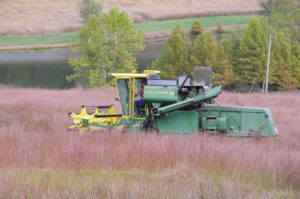Roeslein Alternative Energy & Smithfield Hog Production Project in Northern Missouri
STRIPS Project
Science-based Trials of Rowcrops Integrated with Prairie Strips.
The STRIPS project is composed of a team of scientists, educators, farmers, and extension specialists working on the prairie strips farmland conservation practice. Our research shows that prairie strips are an affordable option for farmers and farm landowners seeking to garner multiple benefits. By converting just 10% of a crop field to diverse, native perennials farmers and farmland owners can reduce the amount of soil leaving their fields by 90% and the amount of nitrogen leaving their fields through surface runoff by up to 85%. Prairie strips also provide potential habitat for wildlife, including pollinators and other beneficial insects. Read More
Evaluation of harvest regime and manure application on native prairie plant mixtures grown for ecosystem services and as feedstock for biogas production.
Carol L. Williams, et al.
Diverse mixtures of native prairie plants, when carefully managed on marginal lands, can prevent soil erosion, retain soil nutrients, improve water quality, sequester atmospheric carbon, provide critical wildlife habitat, and provide farm income simultaneously. A major potential market being explored for mixed native prairie biomass is feedstock for renewable energy including anaerobic digestion (AD) to produce biogas and biochemicals. Research is needed to understand plant characteristics and plant community dynamics that may affect feedstock quality and yields, and biomass sustainability. This video provides a brief overview of a field experiment initiated in 2016 by researchers at University of Missouri to evaluate harvest regime and farm nutrient management practices on native prairie community composition, biomass yields and ecosystem services. Read more.
Weldon Spring Legacy Site - US DOE
The Weldon Spring site had been used for producing explosives during World War II including munitions containing uranium, and radium. In addition, the site housed facilities that processed herbicides (Agent Orange) during the Vietnam War era. Today it provides wildlife habitat, proof that remediation can succeed as part of brownfield recovery efforts.

The Weldon Spring site is surrounded by a critical wildlife corridor including federal, state, and private land holdings. An example being the 6,987 acre Missouri Department of Conservation Busch Wildlife Conservation Area.
The Project
Prairie by accident! Originally, the specification called for a cool-season turf grass type lawn throughout the site. After an initial failure, it was changed to a native warm-season grass mix more tolerant of the site’s difficult ecology. Benefits associated with this change include: habitat, recreation, & lower maintenance costs.
DJM began work at Weldon Spring after major demolition and remediation operations had come to a successful close. From 2002 to 2004, DJM seeded and installed native plants on the 150 acre prairie surrounding the containment cell. The ‘Howell Prairie’ was named after Francis Howell who built a homestead on the site in the early 1800’s.
An interpretive center was constructed on-site to educate the public on the history of the site before, during, and after its active industrial/military uses. DJM installed the demonstration native plant garden outside the interpretive center in 2004.
Stewardship
An interpretive center was constructed on-site to educate the public on the history of the site before, during, and after its active industrial/military uses. DJM installed the demonstration native plant garden outside the interpretive center in 2004.
Additionally, a major Sericea Lespedeza infestation was present prior to construction. This particular weedy species can take years, if not decades, to manage effectively.
